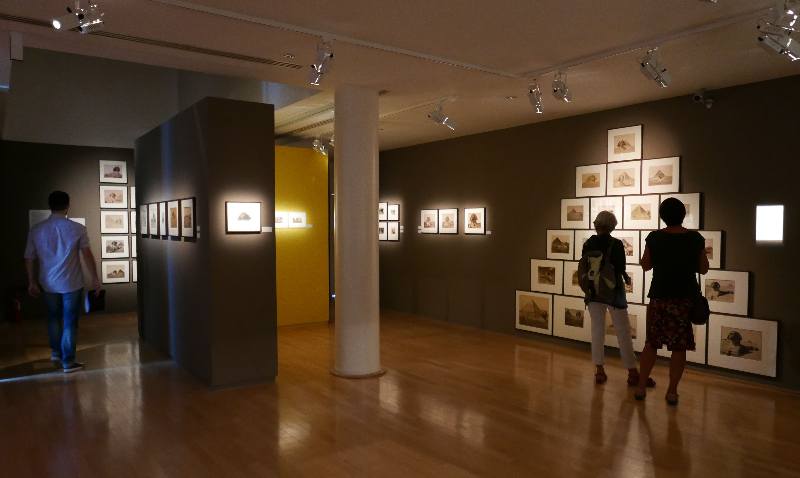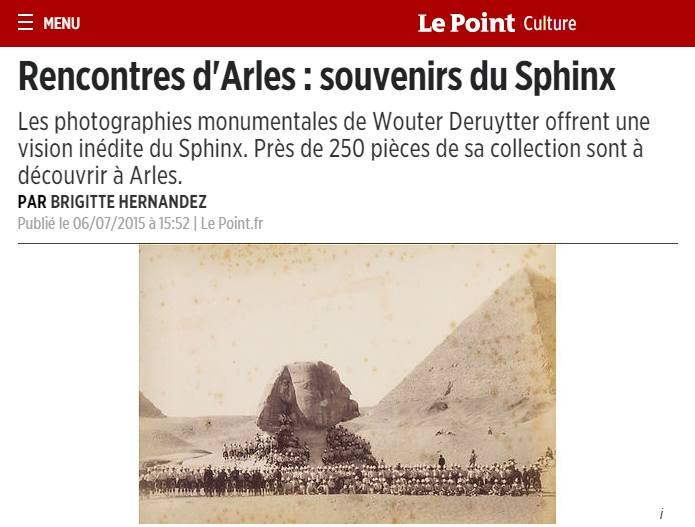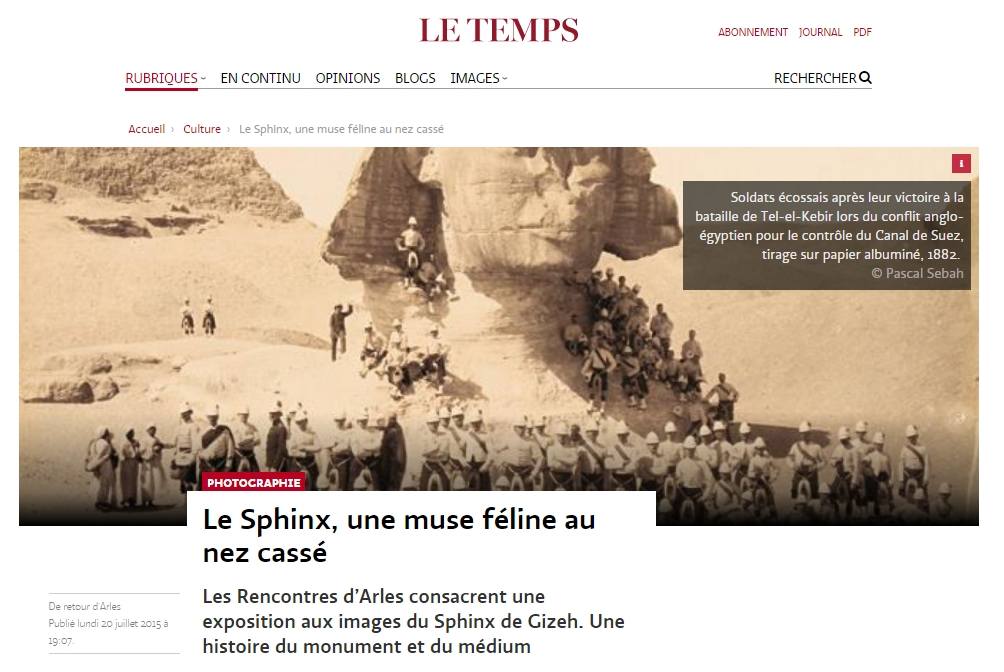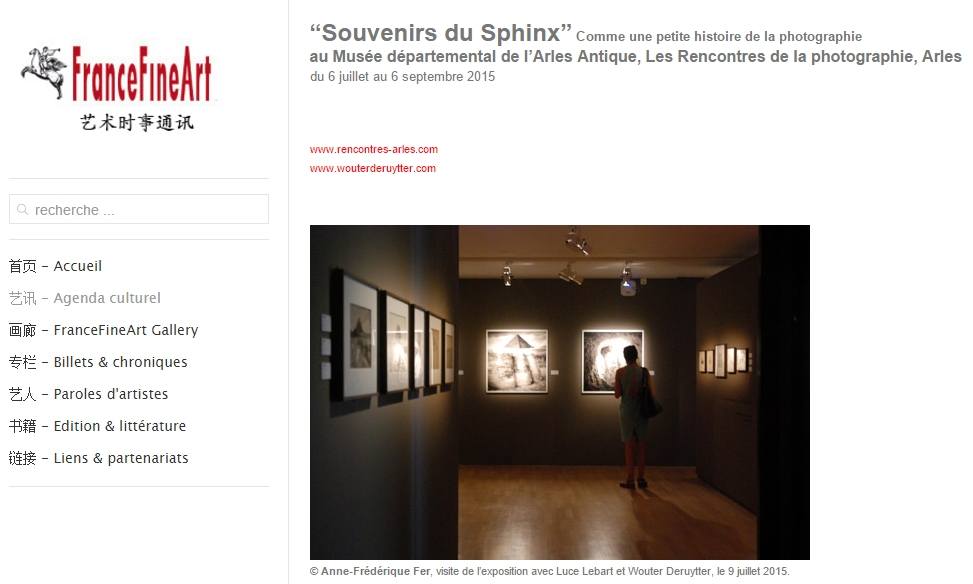Texte de présentation de l'exposition et communiqué de presse :
"Longtemps resté à l’ombre des pyramides, le succès iconographique du Sphinx est encouragé par le dessin et la gravure : il prend toute son ampleur avec la photographie. La collection de Wouter Deruytter décline les occurrences imagées de cette sculpture solitaire et monolithique. C’est ainsi que le Sphinx se déploie sous des ciels d’albumine, de collodion ou de gélatine. Témoin de la naissance de l’archéologie et de l’essor du tourisme, le Sphinx assiste, immobile, au défilé des voyageurs. Les photographies monumentales de Wouter offrent du Sphinx une vision inédite. Explorant les abords et l’intérieur du géant à corps de lion, le photographe nous invite au coeur de la plus énigmatique des sculptures. Ce travail et cette collection nous disent combien la conscience patrimoniale se déplace d’objets en objets. Après avoir accompagné et documenté l’admiration pour le Sphinx, c’est au tour de la photographie elle-même d’être conservée et offerte à la contemplation."
|
"The pyramids overshadowed the Sphinx for millennia until drawings, prints and, especially, photographs made it an icon. Wouters Deruytter’s collection is a history of the photography of this solitary, monumental sculpture. The Sphinx sits beneath albumin, collodion or gelatine skies in monochrome hues ranging from brown to pale pink in nineteenth-century photographs to black and white in the twentieth.The Sphinx, a witness to the birth of archaeology and the growth of tourism, has placidly watched a parade of travellers go by. Wouters’ monumental photographs offer an unprecedented vision of the Sphinx. Exploring the giant with a lion’s body inside and out, the photographer invites us to the heart of the world’s most enigmatic sculpture. This work and this collection tells us how much heritage awareness shifts from one object to another. After accompanying and documenting admiration for the Sphinx, it is the photographs’ turn to be preserved and offered for contemplation."
Luce Lebart
|







